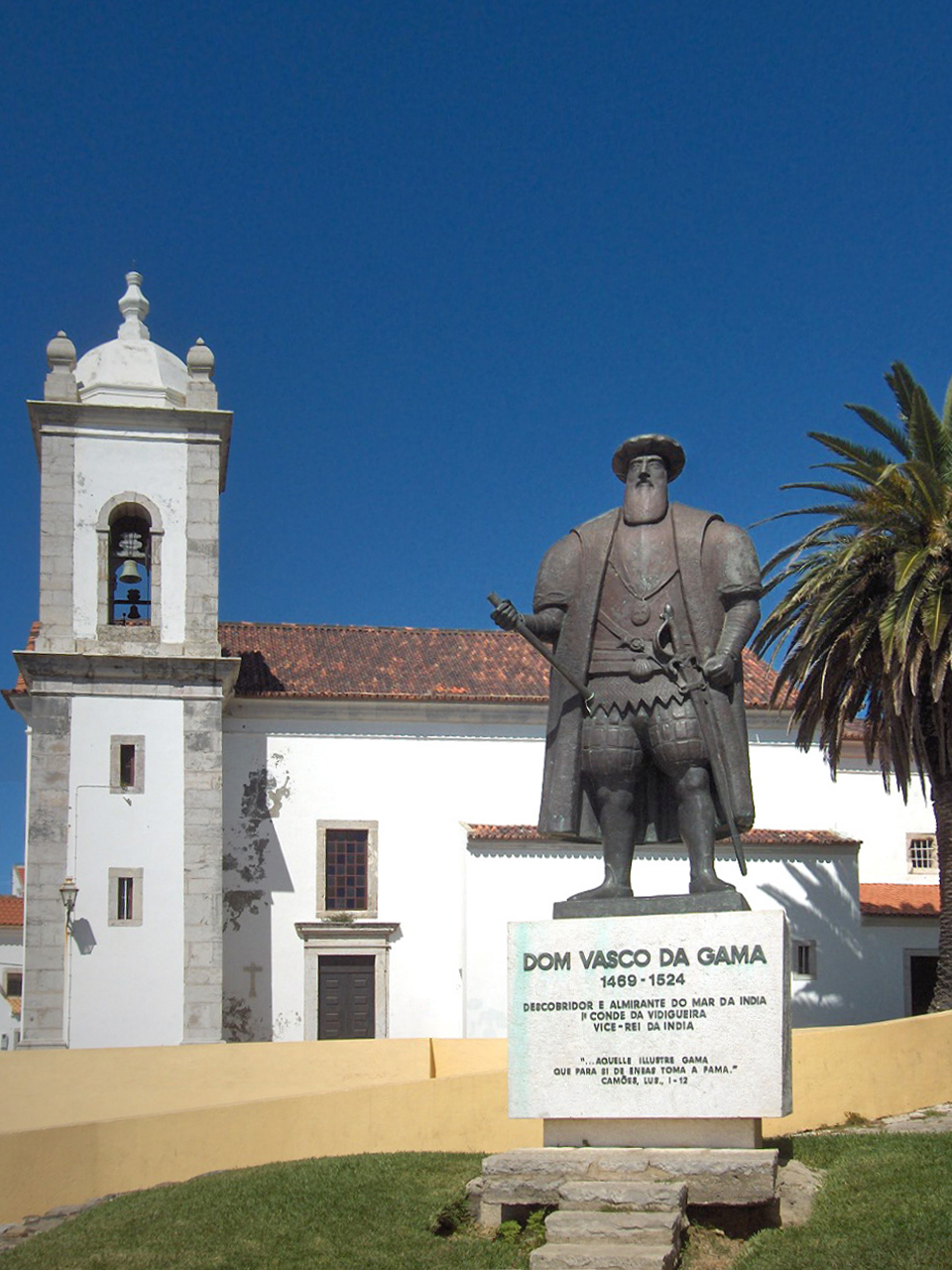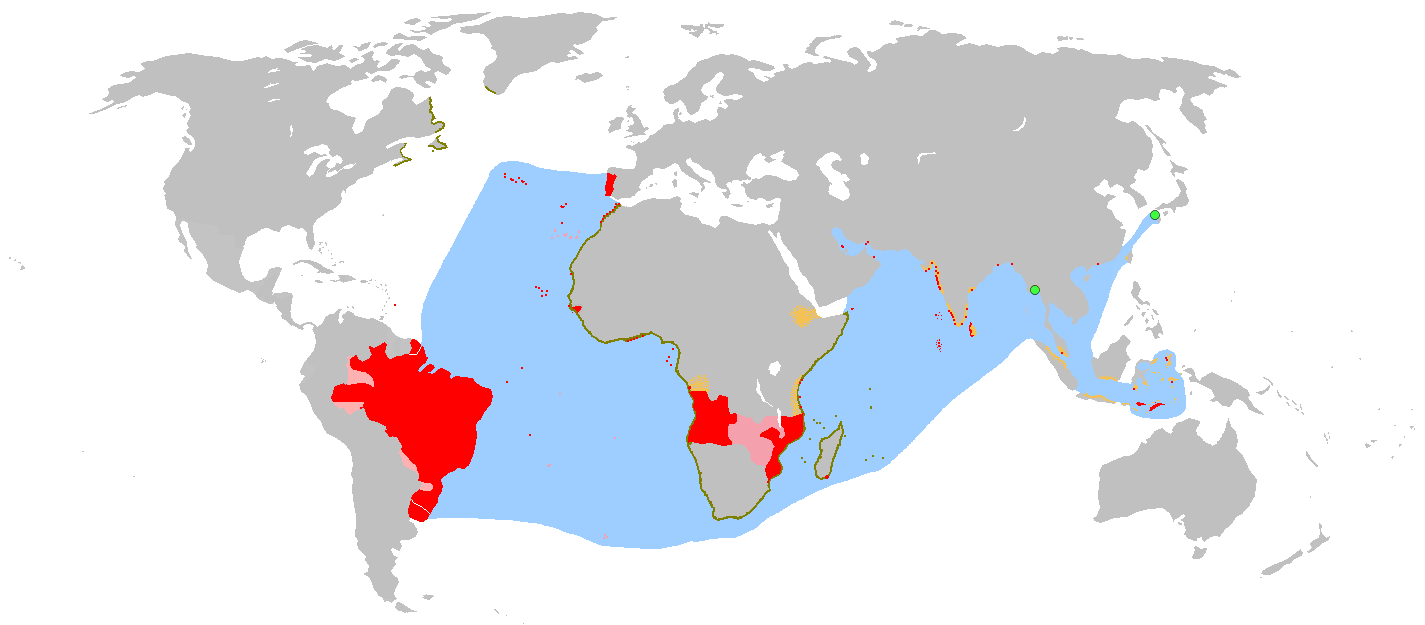|
Fortress Of São Miguel
Fortaleza de São Miguel or Saint Michael Fortress was a Portuguese fortress built in the Ingombota District of Luanda, Angola. During Dutch rule in Angola between 1641 and 1648, the fort was known as Fort Aardenburgh. History São Miguel fort was built in 1576 by Paulo Dias de Novais. It became the administrative center of the colony in 1627 and was a major outlet for slave traffic to Brazil. The fort was for many years a self-contained town protected by thick walls encrusted with cannons. Inside the fort, elaborate ceramic tiles tell the story of Angola from early years, and in the courtyard are large, imposing statues of Portugal's first king, the first European to reach Angola, Diogo Cão, renowned explorer Vasco da Gama and other notables. Until 1975, the fortress served as the headquarters of the Commander-in-Chief of the Portuguese Armed Forces in Angola. Today, it holds the Museum of the Armed Forces. Between 1938 and 1958 it held the Museu de Angola, until it wa ... [...More Info...] [...Related Items...] OR: [Wikipedia] [Google] [Baidu] |
Vasco Da Gama
Vasco da Gama, 1st Count of Vidigueira (; ; c. 1460s – 24 December 1524), was a Portuguese explorer and the first European to reach India by sea. His initial voyage to India by way of Cape of Good Hope (1497–1499) was the first to link Europe and Asia by an ocean route, connecting the Atlantic and the Indian oceans. This is widely considered a milestone in world history, as it marked the beginning of a sea-based phase of global multiculturalism. Da Gama's discovery of the sea route to India opened the way for an age of global imperialism and enabled the Portuguese to establish a long-lasting colonial empire along the way from Africa to Asia. The violence and hostage-taking employed by da Gama and those who followed also assigned a brutal reputation to the Portuguese among India's indigenous kingdoms that would set the pattern for western colonialism in the Age of Exploration. Traveling the ocean route allowed the Portuguese to avoid sailing across the highly disputed ... [...More Info...] [...Related Items...] OR: [Wikipedia] [Google] [Baidu] |
Portuguese Forts
This article will list all fortifications that were built, partially built, or ordered to be built by the Portuguese throughout the globe. All forts in this list are outside the modern territory of Portugal, and were built for the purpose of colonialism and the Portuguese Overseas Empire. Portuguese explorers have discovered many lands and the sea routes in the 15th-18th centuries during the Age of Discovery. Along the way they built outposts and fortresses, many of which still exist today all over the world. Similar in design they are often easy to recognize although not in Portuguese hands for many years or centuries already. List of forts by continent Africa Americas Asia and Oceania See also * Architecture of Portugal Portuguese architecture refers to both the architecture of Portugal's modern-day territory in Continental Portugal, the Azores and Madeira, as well as the architectural heritage/patrimony of Portuguese architects and styles throughout the world, p .. ... [...More Info...] [...Related Items...] OR: [Wikipedia] [Google] [Baidu] |
1576 Establishments In The Portuguese Empire
Year 1576 ( MDLXXVI) was a leap year starting on Sunday (link will display the full calendar) of the Julian calendar. Events January–June * January 20 – Viceroy Martín Enríquez de Almanza founds the settlement of León, Guanajuato, in New Spain (modern-day Mexico). * January 25 – Portuguese explorer Paulo Dias de Novais founds the settlement of ''São Paulo da Assumpção de Loanda'' on the south western coast of Africa, which becomes Luanda. * 1st May – Hungarian Transylvanian Prince Stephen Báthory is crowned king of Poland. * May 5 – The Edict of Beaulieu or Peace of Monsieur (after "Monsieur", the Duke of Anjou, brother of the King, Henry III of France, who negotiated it) ends the Fifth War of Religion in France. Protestants are again granted freedom of worship. * June 18 – Battle of Haldighati: Mughal forces, led by Man Singh I of Amer, decisively defeat the Mewar Kingdom led by Maharana Pratap. July–December * July ... [...More Info...] [...Related Items...] OR: [Wikipedia] [Google] [Baidu] |
Buildings And Structures In Luanda
A building, or edifice, is an enclosed structure with a roof and walls standing more or less permanently in one place, such as a house or factory (although there's also portable buildings). Buildings come in a variety of sizes, shapes, and functions, and have been adapted throughout history for a wide number of factors, from building materials available, to weather conditions, land prices, ground conditions, specific uses, prestige, and aesthetic reasons. To better understand the term ''building'' compare the list of nonbuilding structures. Buildings serve several societal needs – primarily as shelter from weather, security, living space, privacy, to store belongings, and to comfortably live and work. A building as a shelter represents a physical division of the human habitat (a place of comfort and safety) and the ''outside'' (a place that at times may be harsh and harmful). Ever since the first cave paintings, buildings have also become objects or canvasses of much art ... [...More Info...] [...Related Items...] OR: [Wikipedia] [Google] [Baidu] |
Municipalities In Luanda
A municipality is usually a single administrative division having corporate status and powers of self-government or jurisdiction as granted by national and regional laws to which it is subordinate. The term ''municipality'' may also mean the governing body of a given municipality. A municipality is a general-purpose administrative subdivision, as opposed to a special-purpose district. The term is derived from French and Latin . The English word ''municipality'' derives from the Latin social contract (derived from a word meaning "duty holders"), referring to the Latin communities that supplied Rome with troops in exchange for their own incorporation into the Roman state (granting Roman citizenship to the inhabitants) while permitting the communities to retain their own local governments (a limited autonomy). A municipality can be any political jurisdiction, from a sovereign state such as the Principality of Monaco, to a small village such as West Hampton Dunes, New York. ... [...More Info...] [...Related Items...] OR: [Wikipedia] [Google] [Baidu] |
Colonial History Of Angola
The colonial history of Angola is usually considered to run from the appearance of the Portuguese under Diogo Cão in 1482 (Congo) or 1484 ( Angolan coast) until the independence of Angola in November 1975. Settlement did not begin until Novais's establishment of São Paulo de Loanda ( Luanda) in 1575, however, and the Portuguese government only formally incorporated Angola as a colony in 1655 or on May 12, 1886. 16th century Luanda was founded in 1576 with a hundred families of settlers and 400 soldiers. Benguela was founded as a fort in 1587. 17th century Luanda was granted the status of city in 1605. In 1617, Benguela developed into a town. In 1618 the Portuguese built Fortaleza São Pedro da Barra fortress, followed by the Fortaleza de São Miguel fortress in 1634. Luanda was Portuguese Angola's administrative centre from 1627, with one exception. During the Portuguese war of independence against the Spanish, the Dutch ruled Luanda from 1640 to 1648 as Fort Aardenbur ... [...More Info...] [...Related Items...] OR: [Wikipedia] [Google] [Baidu] |
Museum Of The Armed Forces (Angola)
The Museum of the Armed Forces ( pt, Museu das Forças Armadas) is located in Fortaleza de São Miguel de Luanda, in the Ingombota District of Luanda, Angola. Founded in 1975, following the independence of Angola, the museum includes bi-motor airplanes, combat vehicles, and diverse arms and artifacts used during the Angolan War of Independence (1961–1974), the South African Border War (1966-1991), and the Angolan Civil War (1975–2002). The museum also contains statuary which ornamented the avenues and plazas of colonial Luanda, which were removed after independence. These include the statue of Diogo Cão, the first European to set foot in Angola, of Paulo Dias de Novais, founder of the city of São Paulo da Assunção de Luanda, of Vasco da Gama, and of famous Portuguese poet Luís de Camões, among others. The museum grounds and outdoor exhibits, long in a delipidated state, underwent an extensive restoration project at some point between 1997 and 2013. List of Exhibits ... [...More Info...] [...Related Items...] OR: [Wikipedia] [Google] [Baidu] |
Portuguese Armed Forces
The Portuguese Armed Forces ( pt, Forças Armadas) are the military of Portugal. They include the General Staff of the Armed Forces, the other unified bodies and the three service branches: Portuguese Navy, Portuguese Army and Portuguese Air Force. The President of the Republic is the head of the Portuguese military, with the title of " Supreme Commander of the Armed Forces" (''Comandante Supremo das Forças Armadas''). The management of the Armed Forces and the execution of the national defense policy is however done by the government (chaired by the Prime Minister) via its Minister of National Defense. The highest-ranking officer in the military is the Chief of the General Staff of the Armed Forces, which has operational control of the Armed Forces during peacetime and assumes their full control when a state of war exists. The Armed Forces are charged with protecting Portugal as well as supporting international peacekeeping efforts when mandated by the North Atlantic Trea ... [...More Info...] [...Related Items...] OR: [Wikipedia] [Google] [Baidu] |
Headquarters
Headquarters (commonly referred to as HQ) denotes the location where most, if not all, of the important functions of an organization are coordinated. In the United States, the corporate headquarters represents the entity at the center or the top of a corporation taking full responsibility for managing all business activities. In the United Kingdom, the term head office (or HO) is most commonly used for the headquarters of large corporations. The term is also used regarding military organizations. Corporate A headquarters is the entity at the top of a corporation that takes full responsibility for the overall success of the corporation, and ensures corporate governance. The corporate headquarters is a key element of a corporate structure and covers different corporate functions such as strategic planning, corporate communications, tax, legal, marketing, finance, human resources, information technology, and procurement. This entity includes the chief executive officer ... [...More Info...] [...Related Items...] OR: [Wikipedia] [Google] [Baidu] |






